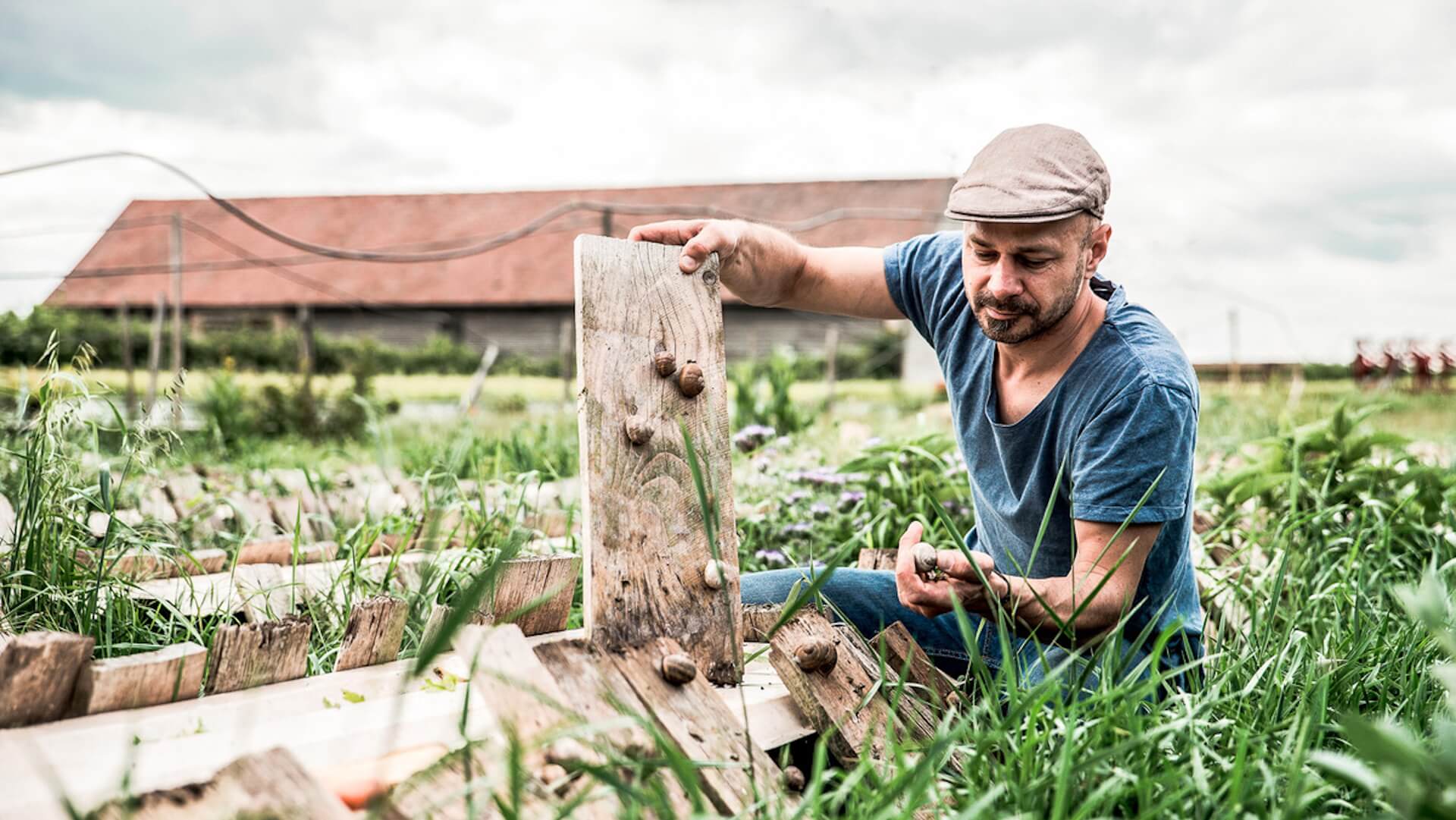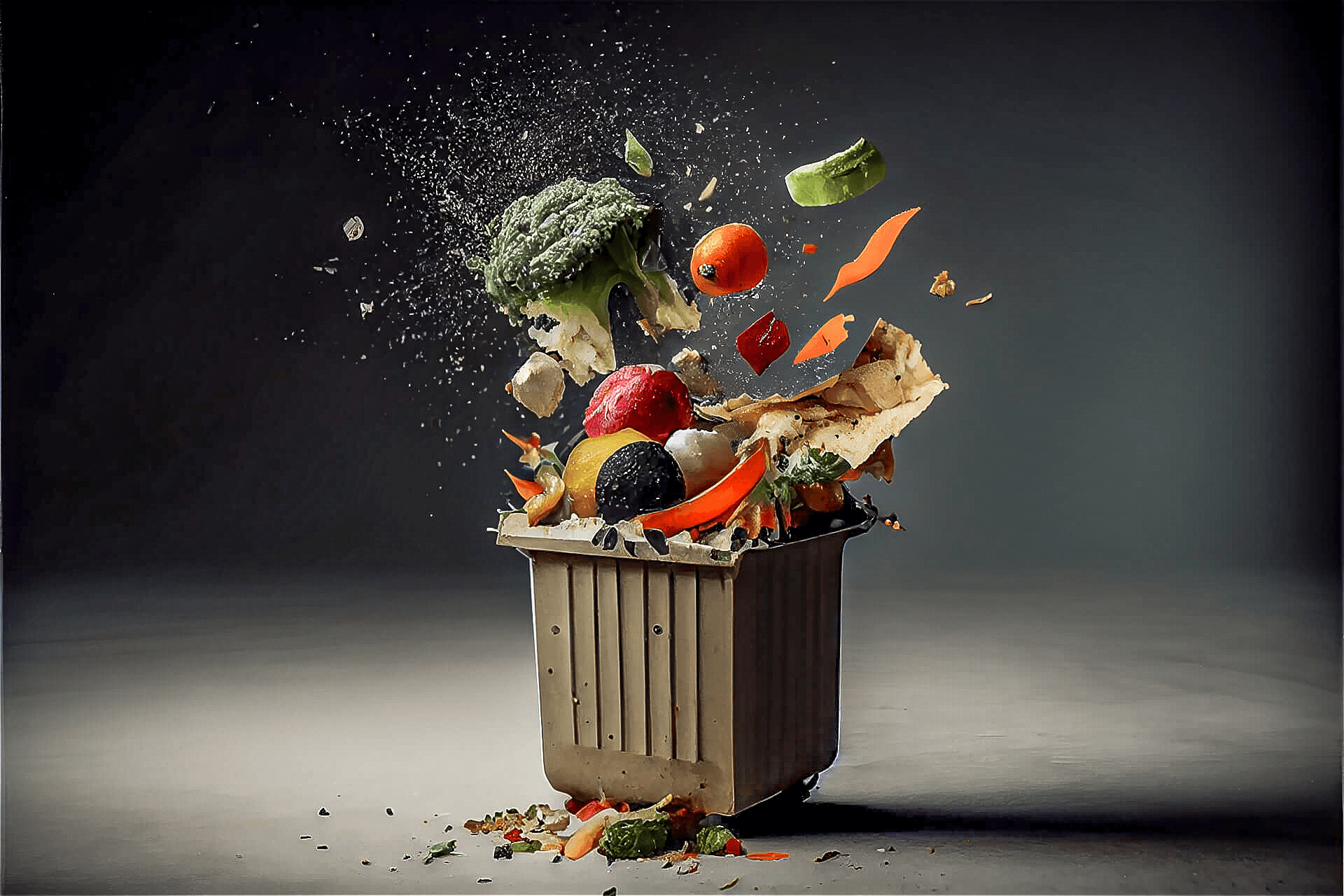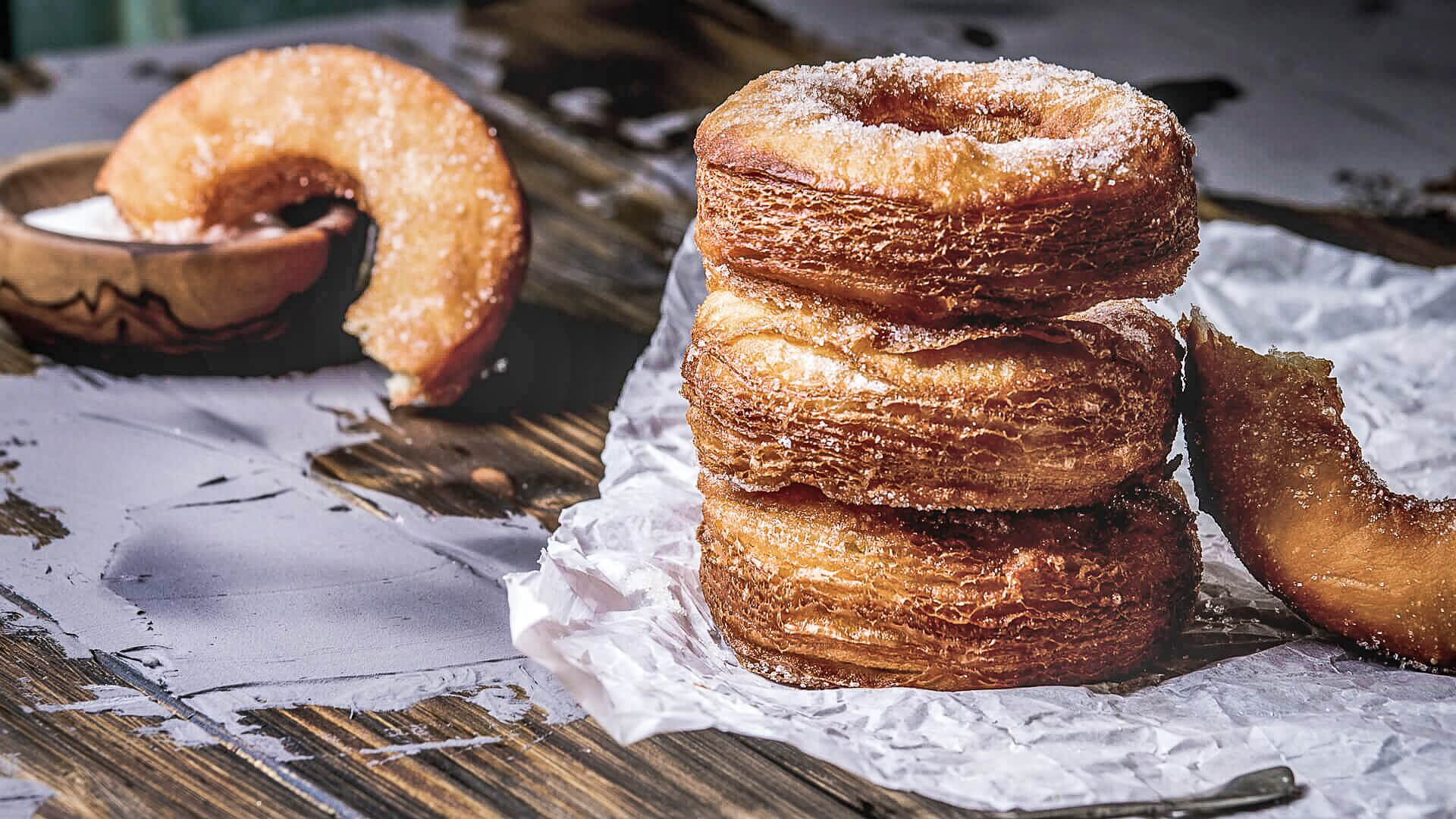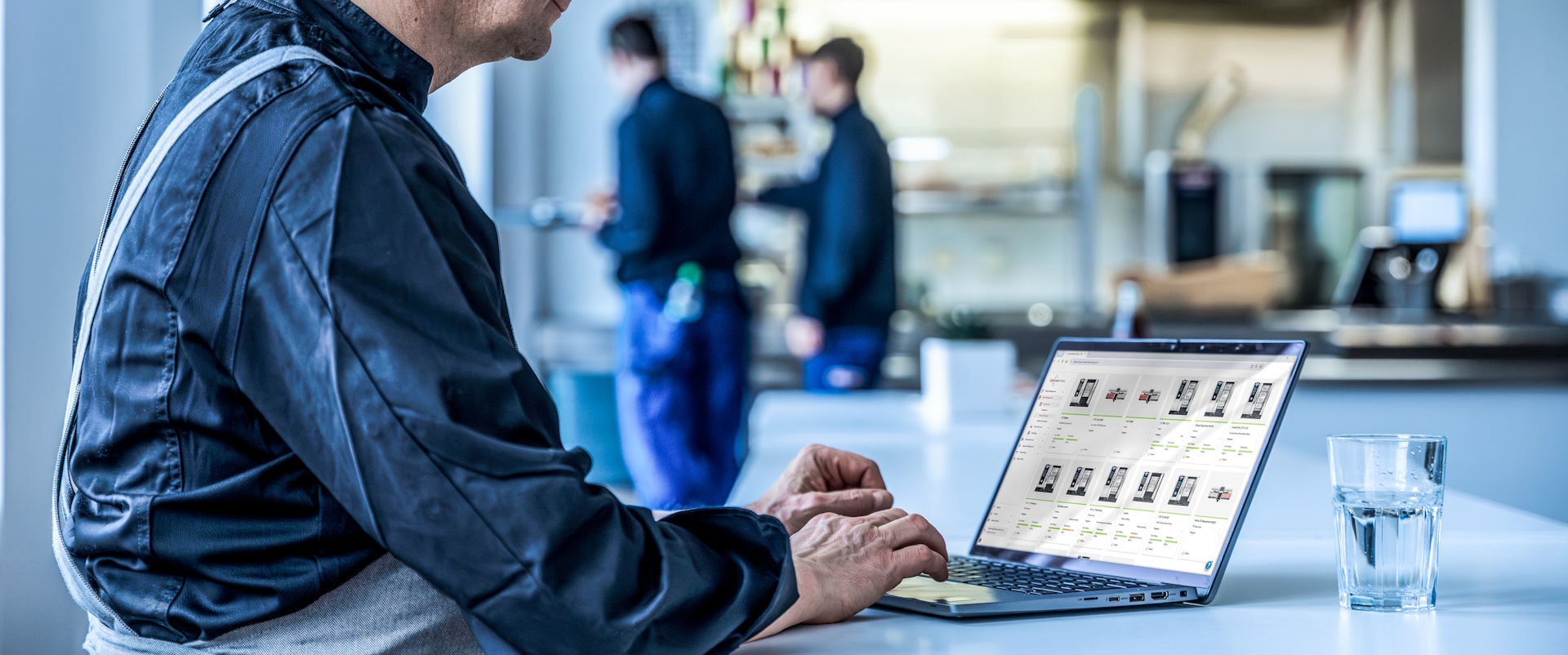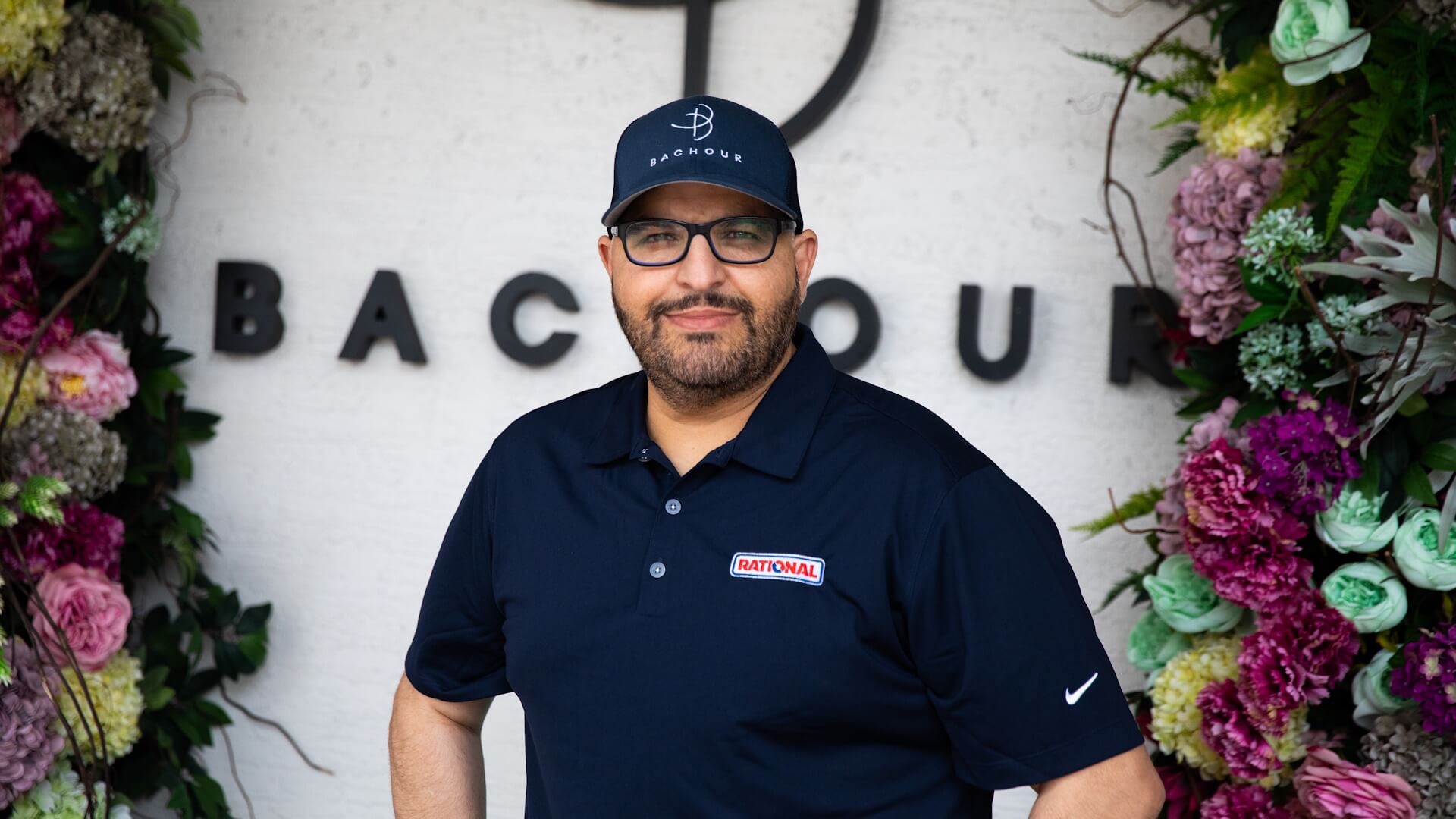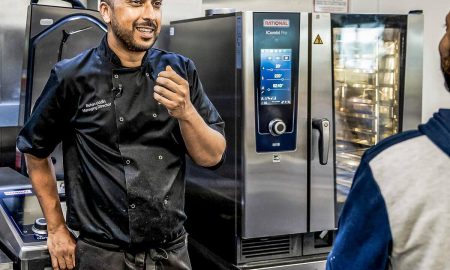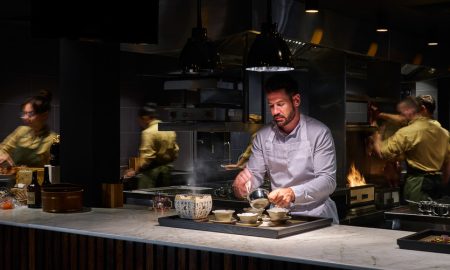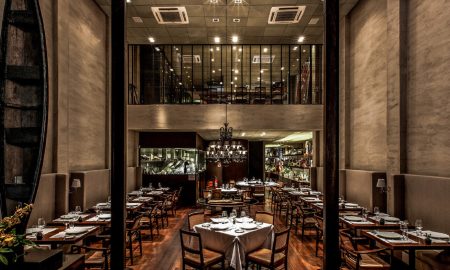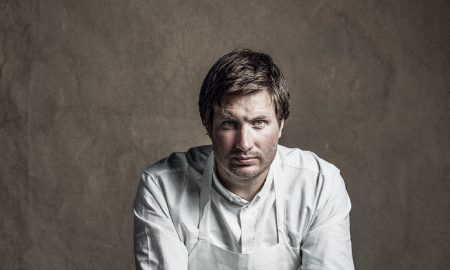Hardly any delicacy bears the name “slow food” as justifiably as the vineyard snail. However, Vienna snail breeder Andreas Gugumuck is fascinated by another feature. “For me, they are the epitome of future food. Compared to other animals, they only need a fraction of the soil area, water, energy and feed. They are happy when they have it moist and shady – and when they get the leftovers greens from the kitchen.”
At a snail’s pace to the Viennese snail manufacturer
But how did it come about that a Viennese city dweller suddenly wanted to make a living with snails? Spoiler alert: Everything happened at a snail’s pace. After all, his career path used to look completely different. Now 49, Andreas Gugumuck first studied business informatics and became an IT manager. However, a dream of freedom close to nature began to emerge while working solely on the computer. And so Gugumuck laid the foundations to becoming a part-time farmer with his current open-air snail breeding business alongside his IT job. In 2014, he founded the Wiener Schnecken Manufaktur (Viennese snail manufacturer) complete with a farm store and bistro on the Gugumuck farm, which has been family-owned for more than 300 years. Here, in Rothneusiedl on the southern outskirts of Vienna, he now breeds and processes around 300,000 vineyard snails per year. “I have to admit, the number is estimated, I’ve never counted them…”, he says with a laugh.

Image: Österreich Werbung
Sustainable agriculture with snails
In addition to a sense of humor, the father of three is characterized by his down-to-earth passion for working close to nature. His grandfather was an early advocate of gentle farming and against the use of chemical pesticides. Andreas Gugumuck is now trying to make his snail breeding as regional as possible: “We feed our animals with ground grain from our own fields and greens, which we get from neighboring farmers.”
The animal diet is enriched with feed lime, says Andreas Gugumuck, who was named “Best Young Farmer of Europe” by the European Parliament in 2012. “We practice sustainable agriculture. Unlike other animals, snails do not produce methane or manure. And the lime feed even enriches the soil, rather than depleting it as is the case with other types of land use.”
However, climate change is not sparing vineyard snails, which reproduce frugally on and under ordinary wooden boards. “If it’s too dry in the summer, it doesn’t make sense to water these vegetable fields artificially either. They hide in their houses from the sun and heat and then don’t eat. We can only irrigate at night to compensate for the lack of dew.”
Snails: healthy, sustainable, high in protein
Helix pomatia, the scientific name of the vineyard snail, is a healthy natural product. The molluscs contain large amounts of selenium, iodine, iron and zinc and are so rich in omega-3 fatty acids that three vineyard snails can cover the recommended daily intake of 200 milligrams. “And what also makes them very interesting is that they supply us with the thyroid hormone T3, which is considered a driving force for human evolution.”
Snails have played a major role in our diet and thus in our development since the beginning, says Andreas Gugumuck. “Wineberg snails have a very high protein content and were therefore a very important source of protein for us.” This easy availability in particular is why the snail was regarded as a “poor man’s food.” “Everyone could just collect them themselves.”
In the mid-1980s, however, the vineyard snail was placed under species protection. Therefore, only food-bred specimens such as those from the Gugumuck farm may be consumed. But that is not the main reason why snails will probably never again become a mass-produced commodity. “Unlike today, labor and working time were not a cost factor in the past.”
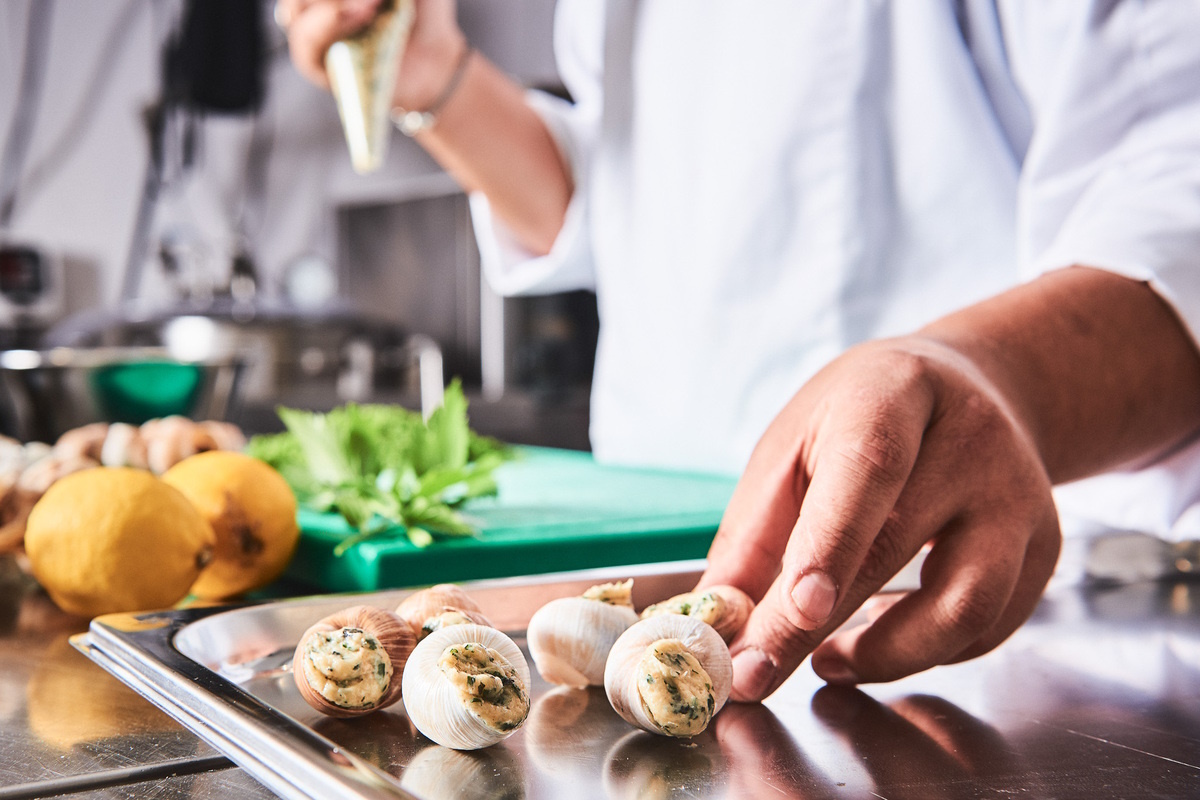
Image: Felix Mayr
Andreas Gugumuck: “This is time-consuming manual work”
Even though snails can easily be bred in bulk, their processing requires time-consuming and labor-intensive manual work. “After the hand-collected animals have gone into a natural state of dormancy after a week, they are blanched in boiling water for ten minutes. Each individual snail is then pulled out of the shell using a two-pronged fork and cut apart in the middle to separate the gut sac from the muscle meat – also work that is done by hand.”
And this, says Andreas Gugumuck, is just the beginning of a process that slowly prepares the snail for consumption. “First, the meat is de-slimed. It is boiled up, sprayed off, boiled up again and sprayed off again. Then the snails simmer for three hours in a tasty stock of white wine, soup greens, bay leaf and juniper.”
Regional delicacies instead of international distribution
Snail breeding is a seasonal job, says Andreas Gugumuck. “Mother animals are processed in June and July, and the main harvest takes place in October and November.” Since not all snails can be processed at the same time, they are frozen at the Wiener Schnecken Manufaktur and, if necessary, defrosted again.
While insects certainly have the potential to become a mass product in his view, the passionate breeder cannot imagine this development happening in snail processing. “With insects, I can easily separate chitin, fat and protein in industrial plants. I don’t even want to do this with snails! The snail should remain a delicacy that you treat yourself to from time to time.”
The food service industry is of course an important snail buyer, and the market is far from saturated. But Andreas Gugumuck remains true to his philosophy of regional delicacies. “For a while, we even sold our products in New York. But then we decided not to expand. We prefer to supply local hotels and restaurants. We are thinking of the long tradition of snails in Vienna’s cuisine.”
Andreas Gugumuck’s team supplies restaurants in the Austrian capital with frozen Viennese snails twice a week. On the homepage, you can order freshly cooked snails in stock, which are then sent by mail in their own small containers. “If you order today, the snails will be cooked tomorrow and the day after tomorrow they will be with you – as fresh and in a quality as if you had cooked them yourself.”
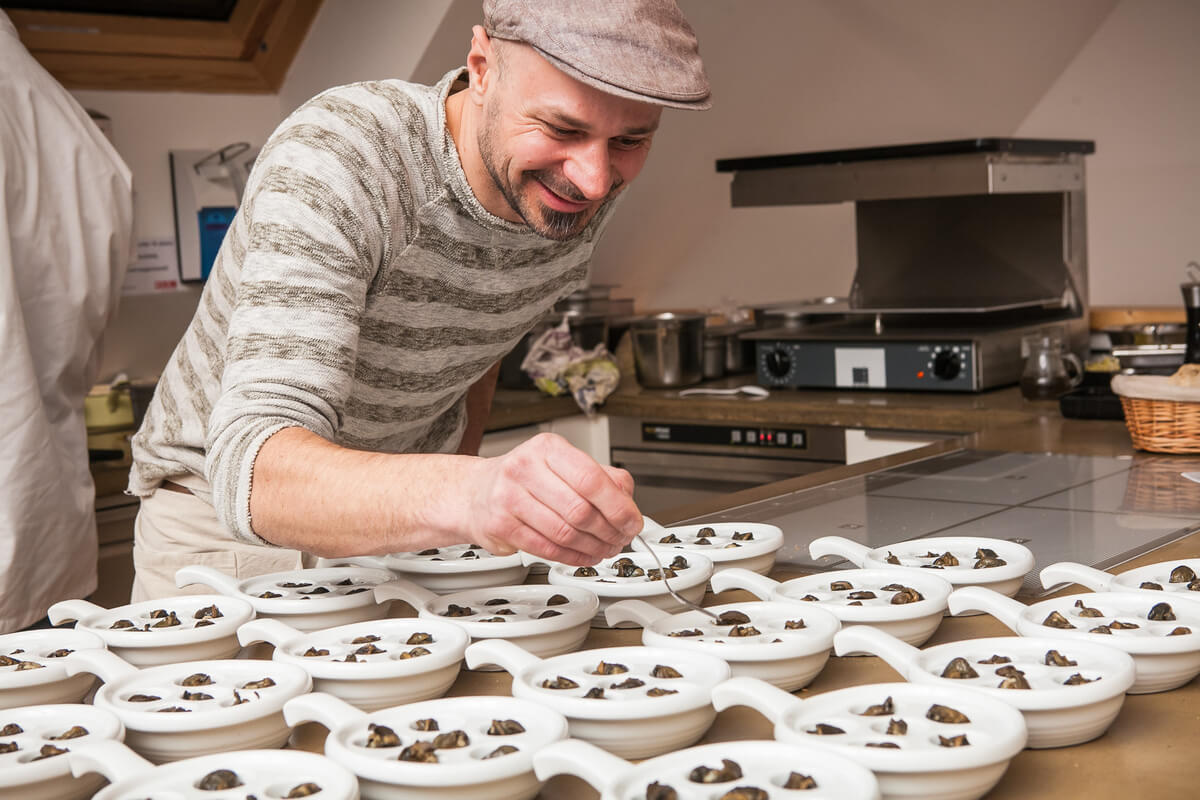
Image: Philipp Lipiarski
Mild, nutty flavor
But what do the snails actually taste like? With its mild, nutty flavor, the vineyard snail is an ideal centerpiece for a wide range of dishes, says Andreas Gugumuck. For example, in the form of “Caracoles a la Catalana”, a Mediterranean specialty in which the snail and its shell are simmered with bacon in a spicy tomato-vegetable sauce for several hours.
Or they can be used to make the more down-to-earth Leberkäs, an Austrian snack classic. “We mix halved snails with fresh herbs and the roast. However, we don’t serve this fried Leberkäse in the traditional bread roll, but rather with homemade mustard and a slice of bread. We don’t want to hide the snails!”
In his own bistro, the snail master creates a seven-course menu in which chef Jürgen Winter creatively presents the vineyard snails in ever-changing ways. “There are also so many options when it comes to preparation. You can turn them into goulash, gratinate them in special snail pans or cook them gently in the steamer .”
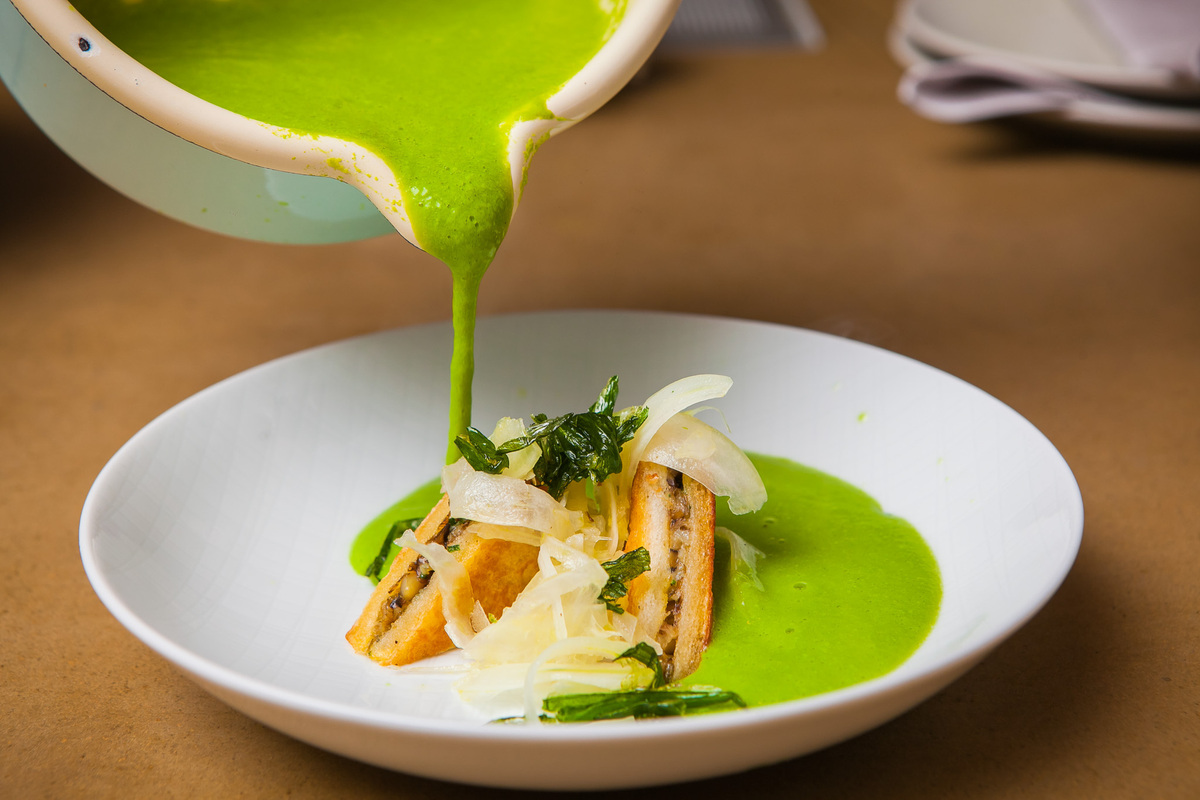
Image: Philipp Lipiarski
No fear of dirt and slime
Andreas Gugumuck thinks a lot about his work. At his “future farm” in Rothneusiedl, he is working on future-proof agricultural concepts for urban areas using an interdisciplinary approach with nutritionists, agricultural scientists, landscape planners and other researchers.
He is equally enthusiastic about making contact with end customers by creating a low-threshold offer at events with his eye-catching food truck, the “SnailTrailer”. While snails were still a matter of course on our grandparents’ menus, a new generation of gourmets seems to find them a bit of a challenge. “I talk a lot to people to get them over their fear of snails. But I’m happy to do that. I know that after the first bite, they’ll be excited!”


